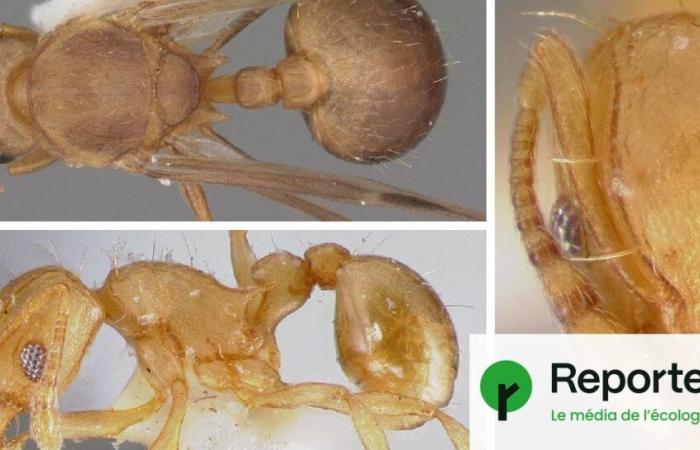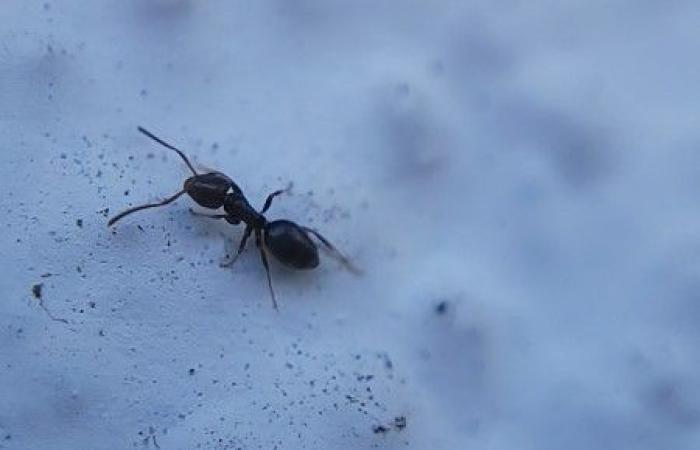The electric ant measures only 1.5 mm, but its numbers and its sting are powerful enough to reduce the biodiversity of entire forests. – © AntWeb.org / CC BY-SA 3.0 – April Nobile / © AntWeb.org / CC BY-SA 3.0; Reporterre assembly
The electric ant measures only 1.5 mm, but its numbers and its sting are powerful enough to reduce the biodiversity of entire forests. – © AntWeb.org / CC BY-SA 3.0 – April Nobile / © AntWeb.org / CC BY-SA 3.0; Reporterre assembly
Reading time: 2 minutes
Its millimeter and a half in length does not prevent Wasmannia auropunctata to be one of the most invasive species in the world. Detected for the first time in France in 2022 in Toulon in the Var, the electric ant was spotted in a second outbreak in La Croix-Valmer, reports France Inter. However, these two infestations do not seem directly linked. An orange-yellow insect native to South America, it inflicts stings reminiscent of electric shocks, which gave it its name.
Already present on several continents, the electric ant takes advantage of international trade, particularly in ornamental plants, to expand. Its capacity to adapt to the Mediterranean climate reinforces its invasive potential. Its mode of reproduction also facilitates its expansion: queens and males reproduce by parthenogenesis, a form of cloning, transmitting their entire genetic heritage, while their combined genes give rise to workers, who although sterile, ensure the functioning of the colonies.
A threat to biodiversity
Despite its size, the electric ant is extremely aggressive and constitutes a threat to biodiversity. It can decimate insect populations and unbalance food chains, as observed in New Caledonia. In infested areas, its predation is such that insects and animals disappear, disturbed or directly eliminated by it.
Classified since 2022 as an invasive alien species of concern for the European Union, the electric ant cannot be legally imported, transported or released into the wild. However, the fight against its proliferation remains complex, in particular because of its resistance to anticides used in Europe and the difficulty of detecting its colonies, composed not of a large anthill but of several interconnected nests.
legend
France







